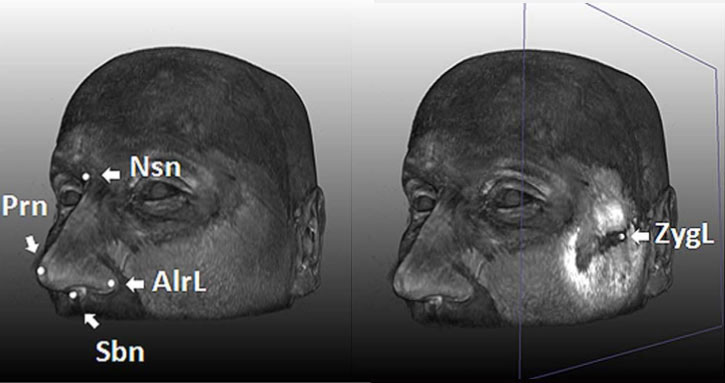Identify 5 genes that regulate face shapes
Scientists have identified five genes that regulate the shape of the human face. This finding may help to better understand facial abnormalities such as cleft palate as well as investigation of crime based on DNA collected in the field.
Previous scientific studies have shown that genes play an important role in regulating the shape of the face because identical twins are completely identical to DNA. However, scientists do not know what kind of genes the face shape is regulated by.
In the new study, scientists at Erasmus University in Rotterdam (Netherlands) have identified five genes involved in the face shaping process, including three genes that regulate face shape and The remaining two genes are responsible for regulating the face structure.

'Our research marks the beginning of understanding the basic genes that shape the face of humans , ' said Dr. Manfred Kayser, head of research, on LiveScience.
Dr. Manfred Kayser and his colleagues used magnetic resonance imaging to scan the head of 5,388 European volunteers, to create a three-dimensional image of each face. After that, the team analyzed genes with 2.5 million DNA of volunteers to find out which genes affect 48 facial features, the distance between face and nose.
Scientists also used 3,867 images of others to examine and verify the link between genes and human face shapes. As a result, the team identified three genes related to facial shape including PRDM16, PAX3 and TP63 , along with two other genes, C5orf50 and COL17A1, which play a role in facial structure.
This study can be used in forensic investigations, because it is able to provide more reliable evidence than field witnesses, often dependent on memory and feeling. However, Dr. Kayser said that using DNA samples to detect criminals cannot be done in the near future.
- Identify identities through photos on the internet
- The plants have funny shapes to scary
- Recreate facial images from DNA
- Identify crime scene on film is myth?
- Police can sketch suspects from DNA
- How sophisticated has face detection technology been?
- Men, deep circles and people may have similar aging mechanisms
- DNA can outline the suspect's face
- Detection of genes that regulate brain aging
- Research helps identify the richness of the face
- Emotional expressions on the face are hereditary
- Identify the genes of
 Green tea cleans teeth better than mouthwash?
Green tea cleans teeth better than mouthwash? Death kiss: This is why you should not let anyone kiss your baby's lips
Death kiss: This is why you should not let anyone kiss your baby's lips What is salmonellosis?
What is salmonellosis? Caution should be exercised when using aloe vera through eating and drinking
Caution should be exercised when using aloe vera through eating and drinking Tomatoes will be sweeter and juicier thanks to new technique
Tomatoes will be sweeter and juicier thanks to new technique  Discovered many types of bacteria containing antibiotic resistance genes in Antarctica
Discovered many types of bacteria containing antibiotic resistance genes in Antarctica  The strange evolution of carnivorous plants
The strange evolution of carnivorous plants  Science proves that smart children are mainly thanks to their mothers
Science proves that smart children are mainly thanks to their mothers  Are we more like father or mother?
Are we more like father or mother?  Who wears glasses is smarter than others?
Who wears glasses is smarter than others? 